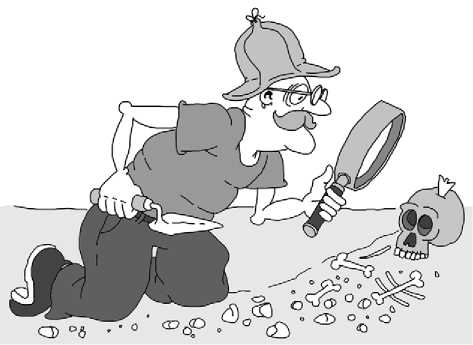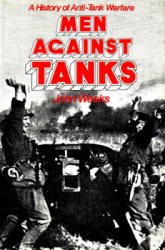As contemporary Western societies are characterized by increasing specialization, professionalization, and scientification, it is not surprising that the past too is expected to be dealt with by experts, in this case historical and archaeological scholars who have the skills to investigate the past. Archaeologists have long been considered - and considered themselves - as professional detectives of the past. They solve profounD mysteries and reveal the secrets of the past for us all. Alluding to this role, Alfred Kidder described the opposite to the ‘hairy-chested’ archaeologist in the following terms:
The hairy-chinned archaeologist [...] is old. He is benevolently absent-minded. His only weapon is a magnifying glass, with which he scrutinizes inscriptions in forgotten languages. Usually his triumphant decipherment coincides, in the last chapter, with the daughter’s rescue from savages by the handsome young assistant.
This Sherlock Holmes-type figure has become a common cliche for the archaeologist (Figure 2). Although the detective has been associated with other disciplines too, the link with archaeology is extremely close. As has often been pointed out, both archaeology and forensic science and criminology draw, in parts, on seemingly incontrovertible material evidence, which is carefully documented and taken to provide significant clues as to what really had happened at the site under investigation. Both use advanced technology helping them to come up with reconstructions of the past based on circumstantial evidence (Table 2).
Many archaeological TV documentaries, for example, those on Discovery Channel including Time Team, tend to adopt detective-style narratives to tell their stories. The same is true for a large number of adventure and computer games such as Riddle of the Sphinx (2000) and The Mystery of the Mummy (2003).
The genre of the archaeologist as detective has often been parodied. The perhaps best-known example are Calvin & Hobbes’ excavations. Another brilliant example is the author and illustrator David Macaulay’s (1979) account of the Motel of the Mysteries, a late twentieth-century ruin re-discovered in 4022 by the mediocre amateur archaeologist Howard Carson. The site was to reveal ‘wonderful things’ indeed about a mysterious lost civilization.
Arguably, a special case within the detective category is the antiquarian scholar, usually an elderly

Figure 2 The archaeologist as detective, cartoon by Quentin Drew.
Table 2 Detective/scholar archaeologists of popular culture
Dr. Cornelius
Daniel Jackson, Egyptologist Professor Henry Jones Sr.
Professor Kilroy, Professor Articus,
Dr Charles Lightning Martin Mystere Dr Eric Leidner
Professor William Harper Littlejohn
Evelyn O’Connell (Carnarvon), Egyptologist
Amelia Peabody and Radcliff Emerson, Egyptologists
Jean-Luc Picard, Professor Richard Galen
Professor Hercules Taragon, Americanist
A chimpanzee in the film The Planet of the Apes
The hero in the film Stargate and subsequent TV series Stargate SG-1
Indiana Jones’ father (see Table 1)
A character with different names in the Lego Adventurers theme featuring Johnny Thunder The hero in an Italian comic series
The murderer in Agatha Christie’s Murder in Mesopotamia (1936)
A character in the 1930/40s Doc Savage novels by Lester Dent and other (associated comics, radio shows and a movie from 1975)
Major character in the Mummy films and recent role playing games
Main characters in a series of novels by Elizabeth Peters
The captain of the Enterprise and his former teacher in the TV series Star Trek
A character in two Tintin adventures
Male professor with glasses and a beard, somewhat dull but not always unattractive, obsessed with his research - which he perceives as a large puzzle, keeping a journal containing his theories, and a little out of this world. This, for instance, was the role played by archaeologist Mortimer Wheeler on British TV during the 1950s.
The gentleman-like scholar, like the detective, creates light where there was darkness, solving academic mysteries through the skills of careful observation, enormous knowledge, strict logic, and some intuition when it matters most (Table 3). In a way this character is thus a hero too, although not in the sense of the classical adventure discussed earlier (which is why some prefer to speak of an anti-hero in this context). The narrative that goes with scholarship in popular culture nevertheless bears an astonishing resemblance to that common in adventures: scholars leave behind their own familiar world, fully committed to command other worlds; they work in their fields exploring uncharted territories without fear or hesitation; they make sensational discoveries, and eventually they announce their enlightenment to the world at large, which in turn rewards them with recognition, although their own motivation is entirely selfless.
Indiana Jones’s father Professor Henry Jones, who was famously played by Sean Connery in the Last Crusade, is designed precisely in this mould. He does not like being disturbed and never had time for his son since he followed his personal quest of scholarship for all his life. Yet then the scholarly passion of his father suddenly merge with Indy’s adventure, and the Professor’s scholarship becomes as important as Indy’s fighting skills for the successful completion of their joint adventure. In this case as well as in The Mummy and Stargate movies, the Relic Hunter
Table 3 Similarities between the detective story and the fact-
Based archaeological novel as represented by Ceram
Detective story
1. The detective
2. The crime, lying in the dark
3. The motive which can explain the crime
4. Techniques of delay (false tracks, resistance, competition, envious opponents)
5. Great excitement immediately before the revelation or discovery
Fact-based archaeological novel (Ceram)
1. The archaeologist
2. The archaeological artifact, lying in the dark
3. The key which can explain the artifact (e. g., Rosetta Stone)
4. Techniques of delay (false tracks, resistance, competition, envious opponents)
5. Great excitement immediately before the revelation or discovery
Source: Schctrken (1995: 74), my translation.
Episodes, the Lego Adventurer products and the Doc Savage series, among others, the detective/scholar and the adventurer together form the classic team for solving archaeological mysteries where many pieces of a puzzle first have to be found and then put together. Only at the end, the full picture will be revealed.
These correspondences between criminological and archaeological mysteries are certainly one reason why archaeologists and archaeology occur frequently in detective fiction. Fore example, the bestselling American author Tony Hillerman (e. g., A Thief of Time, 1989) likes to combine themes about native American archaeology with the work of his police officer Joe Leaphorn. Agatha Christie, whose Hercule Poirot is explicitly inspired by archaeological methodology, was even married to the archaeologist Max Mallowan and participated in a series of his excavations herself.
However, in popular culture, not all archaeological scholars are successful detectives, becoming heroes in their own fields. Some seem to be doing little else than conducting arcane research through which they accumulate obscure facts and artifacts. They are from educated middle-class backgrounds and come across as dull and boring people, so that popular culture occasionally makes fun of them. This is the case with Jean-Luc Picard, Captain of the Enterprise and a dedicated amateur archaeologist. When, in the Star-trek episode ‘Qpid’, he addressed the Federation’s Archaeology Council, his ‘scientific’ speech is described (and indeed performed) as ‘dull’ and ‘pedantic’. Another boring archaeologist was depicted in the popular 1980s BBC sitcom Hi-De-Hi, written by David Croft and Jimmy Perry. The series was set in a typical British holiday camp in the 1950s and 1960s. Jeffrey Fairbrother, a former Professor of archaeology, is the awkward and uncomfortable new entertainment manager who introduces himself with the following words:
I left my seat at Cambridge as Professor of Archaeology, essentially, to discover just how to stop being boring. It’s no secret that being boring is what led to the end of my marriage, and I found, to my surprise, that many of my students were falling asleep during my lectures too because they were bored as well.
Scholars, like detectives, are widely considered benevolent and harmless. Indeed, their scholarship and methodology is often seen as appealing and enviable. In the context of the scholars’ own families, however, the complete dedication given to their research can be more sad than funny. This is well illustrated by Henry Jones who, in Indiana Jones and the Last Crusade, emerges as a father who had been obsessed with his scholarship for all his life and never had time for his son. At the end of the film he finally seems to realize his mistake (Son: ‘‘What did you find, Dad?’’ - Father: ‘‘Me?’’).
In addition, there can be a side to this character yet more dangerous. Whether by some historical coincidence or as a result of misguided ambitions, the scholar may end up on the ‘wrong’ moral side. Such figures can become potent enemies even to their own colleagues, as demonstrated by the Nazi archaeologist Dr Elsa Schneider in Indiana Jones and the Last Crusade (1989) and the corrupt archaeologist Alex West who works for an auction house, in Lara Croft: Tomb Raider (2001).




 World History
World History









